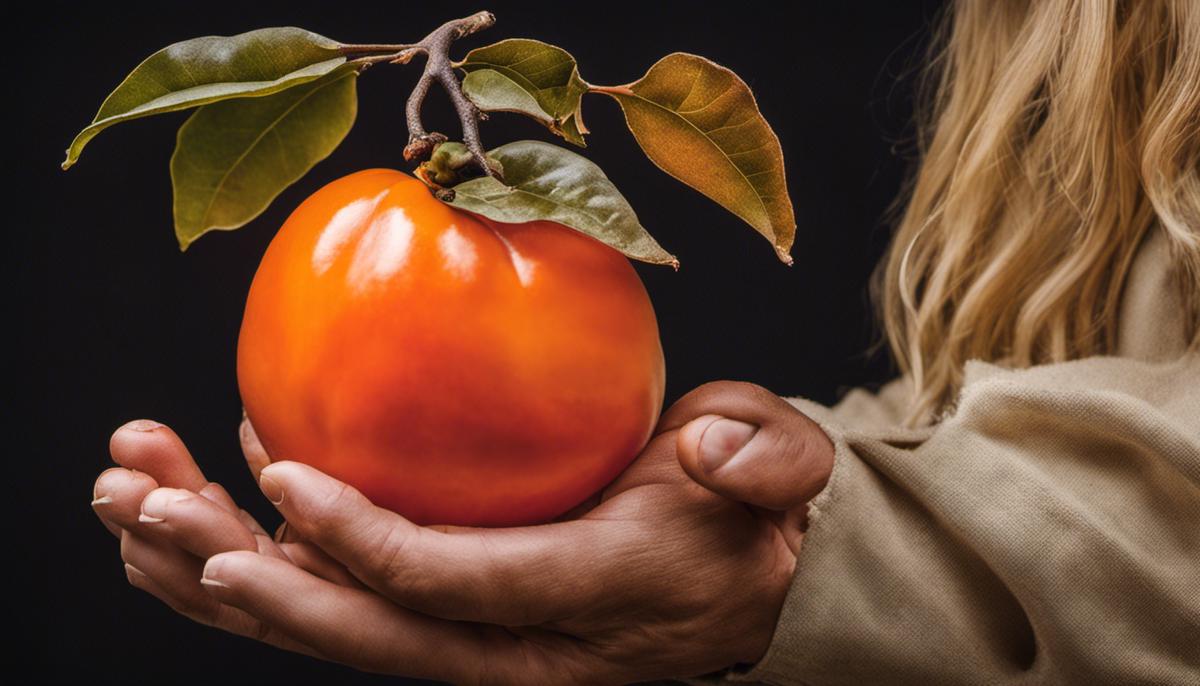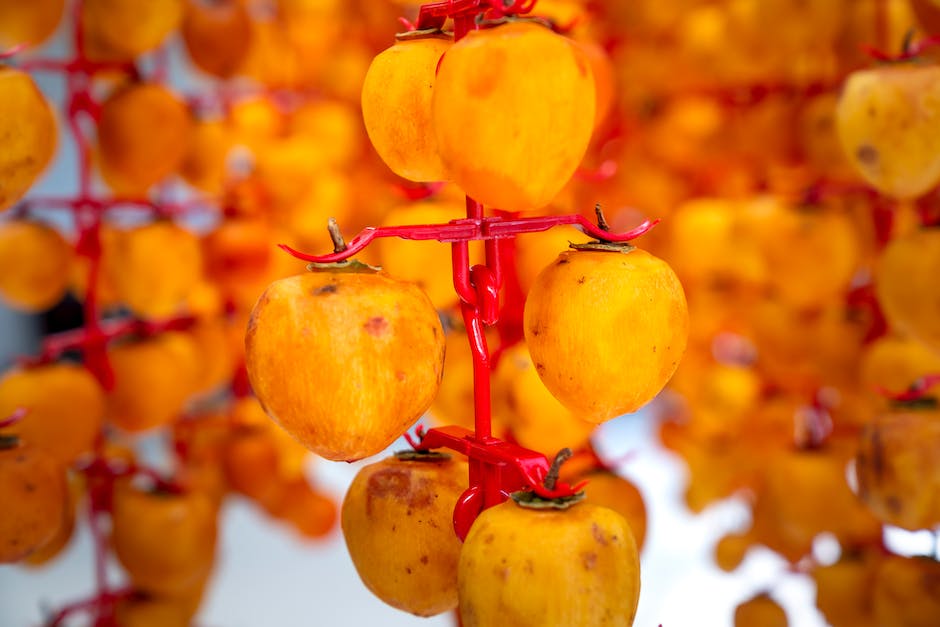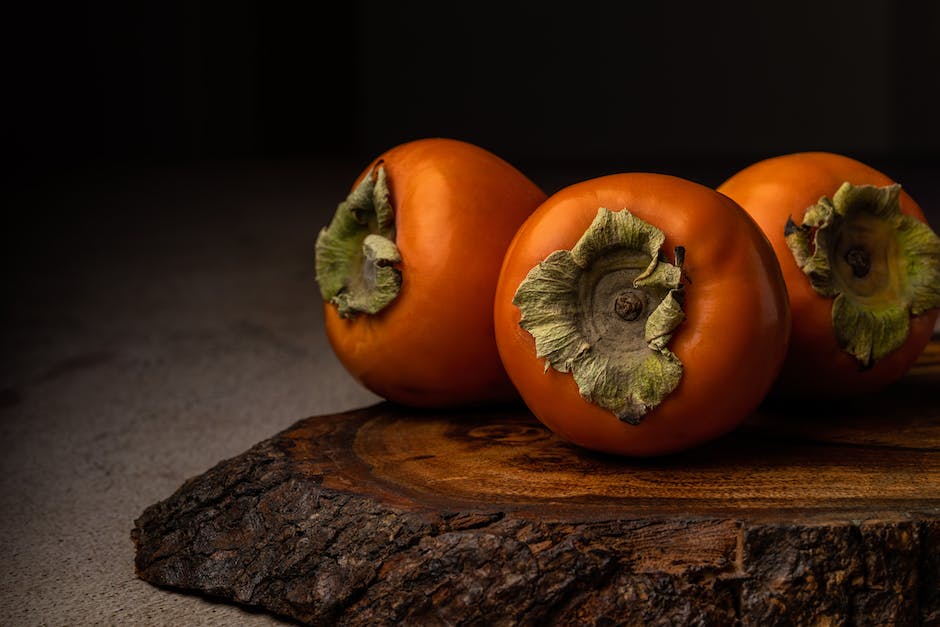Understanding Persimmon Ripeness: A Simple Guide

Persimmons, also known as the “fruit of the gods,” are an autumnal delicacy that can be as satisfying as they are perplexing. But how do you know when the fruit is ripe and ready to eat? The trick lies in understanding the visual examination, performing a tactile test, and fully discerning the taste. This process helps you appreciate not just the science, but the art and pleasure of predicting the perfect persimmon ripeness. This knowledge opens up an entirely pleasant experience that everyone should have the chance to enjoy.
Visual examination of persimmons
Spotting the Perfectly Ripe Persimmon: An Art to Master for Fruit Lovers!
Hello, fruit aficionados! Understanding how to select a ripe persimmon is a skill one needs to acquire, should they wish to relish the true sweetness of this wonderful fruit. The beauty of the persimmon lies not just in its vibrant color, but also in its transition from an astringent, somewhat unpalatable fruit, to a sweet, lusciously soft delight – all it takes is just a bit of patience and the right knowledge about the signs of ripeness.
Beginners often question, “What should a ripe persimmon look like?” The truth is, judging the ripeness of this fascinating fruit can be quite tricky. Unlike other fruits that might offer an immediate give at the perfect level of ripeness, the persimmon is a bit of a tease – it keeps one guessing. But, worry not, persimmon seekers, because we’re going to share a few hints and tips to identify a wonderfully ripe persimmon.
First, let’s clarify something right off the bat: there are two common types of persimmon, the “Hachiya” and the “Fuyu”. Each type reveals its ripeness differently, so it’s crucial to know which you are dealing with to avoid a scrunchy-faced tasting experience!
Now, onto spotting the right ones:
- Hachiya Persimmons: Now these are heart-shaped jokers that need to be exceptionally soft before they’re ready to eat. A deep, vibrant orange hue indicates that a Hachiya persimmon is ripe, but even then, ensure to give it a gentle squeeze to avoid an astringent surprise. If the fruit yields to mild pressure, similar to a ripe tomato, and feels like a water balloon, it’s ready for a sweet feast!
- Fuyu Persimmons: Unlike their Hachiya counterparts, Fuyus can be enjoyed while they’re still firm. They are more squat and round in shape, reminiscent of an orange tomato. When ripe, they feature a pumpkin orange color, and while a slight give to pressure is good, a firm Fuyu can still be utterly delightful to the palate.
Another tip, regardless of the type, is to look for a persimmon with glossy, smooth skin free of cuts or bruises. When ripe, the calyx (the leafy or flower-like part at the top) should form a neat, little four-cornered star.
Finally, the ripest persimmons are usually the last to linger on the tree after the fall of the leaves. So if your endeavor for ripeness extends to picking them yourself, gather the late-hangers, keeping the late bountiful harvest all to yourself!
Mastering the art (and patience) of picking the perfect, ripe persimmon can amp your autumnal and early winter fruit bowls to levels you’ve never experienced before. So, step out, be patient, and pick those perfectly ripe persimmons! Happy persimmon picking!

Tactile test for persimmons
The Fundamentals of Feeling: The Tactile Approach to Picking Perfect Persimmons
Allow this article to serve as the tactile enthusiast’s guide to identifying the perfect persimmon, ripe and ready to be enjoyed. The element that comes into play is a fundamental sense: the power of touch. When engaged correctly, fingertips can be the key to unlocking peak persimmon picking prowess.
It’s essential to understand that the perfect feel of a persimmon varies widely depending on its type. As we’ve previously discussed, we are chiefly concerned with Hachiya and Fuyu persimmons—the two most commonly found types in the United States.
Here’s an interesting fact: Hachiya and Fuyu persimmons should feel vastly different when ripe. Let’s delve into the remarkable world of the “fruit of the gods” discerning its ripeness using touch.
Hachiya persimmons are the acorn-shaped variety, and when they are truly ripe, they should feel very squishy – almost like a water balloon. Attempting to eat a Hachiya before it reaches this state will result in a strong astringent taste – certainly not something you want to experience! So, don’t be scared off by a Hachiya with skin that looks like it may split at any given moment; that’s when you know you’re in for a real treat!
On the contrast, Fuyu persimmons, which have a flattened, tomato-like shape, are non-astringent. Ripe Fuyu persimmons have a more solid feel to them, similar to a slightly firm tomato. They don’t need to be overly soft to be eaten. If you apply a little pressure and it yields slightly, then it’s a signal that it’s ready to be enjoyed!
The tactile journey doesn’t stop there. Other than the feel factor, texture is also crucial in ultimate persimmon selection. Remember, an excellent persimmon should have a tight skin, almost like a filled balloon. If the skin has shriveled or has started to break, it’s wise to leave that out of your selection.
In closing, never underestimate the power of touch. Familiarizing your fingertips with the feel and texture of ripe persimmons is an invaluable tool in your arsenal. This tactile acumen will be a true game-changer in enhancing your fruit selection experiences from here on out. Happy persimmon picking, everyone!

Tasting a persimmon
Entering the world of the persimmon may initially seem straightforward, yet unlocking the full joy of this incredible fruit is an art form that requires a bit more knowledge. One aspect you need to get right to truly enjoy this fruit to the fullest is understanding how a ripe persimmon tastes. The flavor profile is as complex as it is delicious, and truly understanding what you’re experiencing when you bite in can elevate your appreciation of persimmons.
To start with, there’s no one-size-fits-all answer, as the taste can vary greatly between types of persimmons. In general, though, the first sensation on biting into a ripe persimmon is one of rich sweetness. A ripe persimmon has a relatively high sugar content, which gives it an intensely sweet taste that has been compared to honey or brown sugar. This sweetness is countered by a slightly tangy or tart undertone that stops it from becoming too overwhelming.
Often, one might also pick up hints of flavors akin to cinnamon, nutmeg, and other warm, fall spices. While these aren’t truly spices, the persimmon’s sweet and slightly spicy flavor profile can sometimes fool the palate into imagining they’re there. This warmth and depth lead many to describe persimmons as tasting like Christmas in a bite!
Bite into a ripe Hachiya persimmon, which has been perfectly allowed to soften, and you’ll also notice a custard-like consistency that melts in your mouth. This transition from tart to creamy, custardy warmth an exciting revelation that keeps the taste buds captivated.
A ripe Fuyu persimmon, on the other hand, combines subtle sweetness with a slightly crispier texture, similar to that of an apple. The flavor is less intense than the Hachiya variety, with a refreshing and bright undertone. Fuyu persimmons excel in their crispness, a rare treat amidst the world of generally soft, juicy fruits.
If words could do justice to the unbelievable journey one embarks upon when savoring a ripe persimmon, this article would surely go on and on. From the first bite of sweetness, through the tart undertones and spicy whispers, eventually climaxing at the fruit’s dreamy, melting finish—the experience is nothing short of magical.
But alas! There’s no substitute for experience. So, dear persimmon enthusiasts, don your most detailed food critic hat, education about the mysterious persimmon at hand, and set forth into the whimsical world of persimmon tasting. Here’s to discoveries of delightful bites and flavorful revelations. Enjoy!

Photo by brookelark on Unsplash
Knowing how to identify a ripe persimmon can drastically improve your culinary experiences with this beloved fall fruit. By mastering the visual cues, tactile tests, and unique taste characteristics, you can delve into the satisfying world of persimmons and ensure every eating experience is an enchanting one. So, the next time you come across a persimmon, remember these tips and you’ll be well on your way to having a luscious, perfectly ripe persimmon in your hand.



